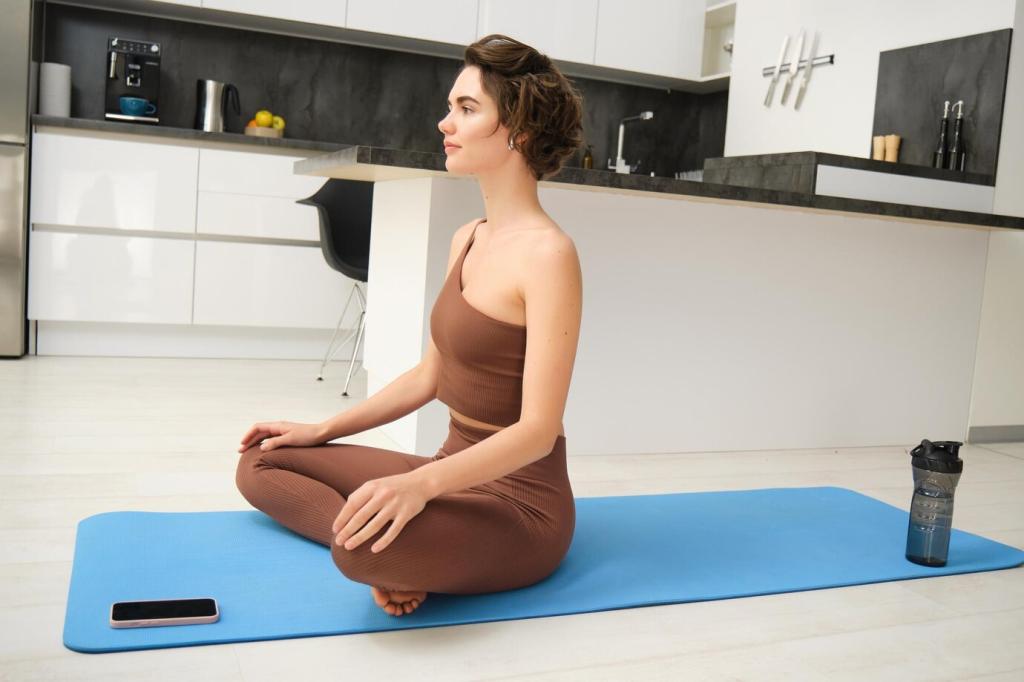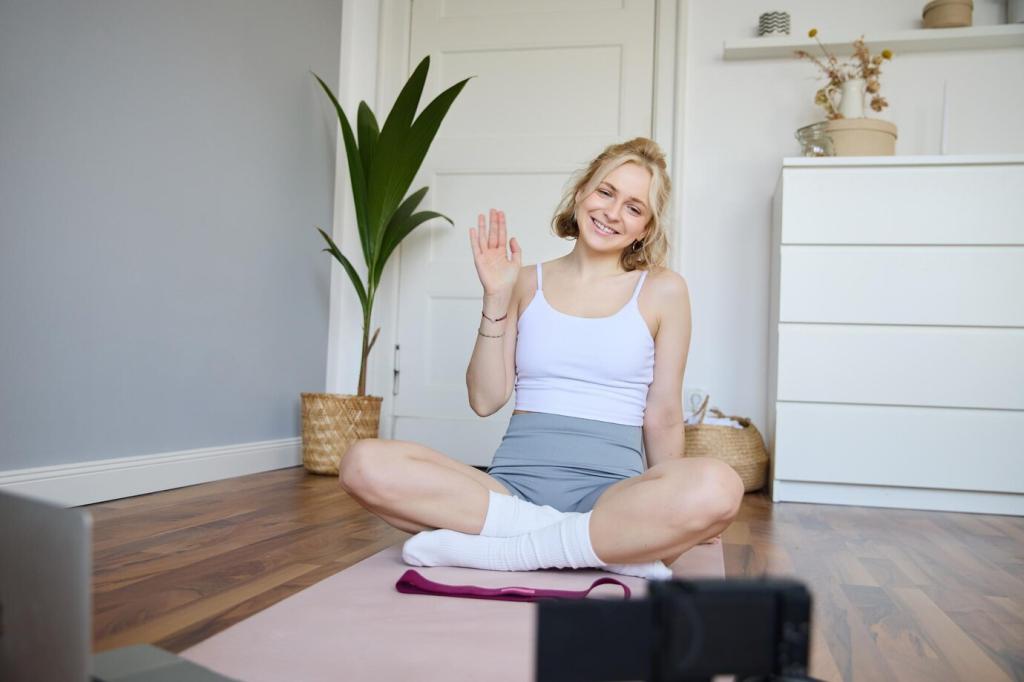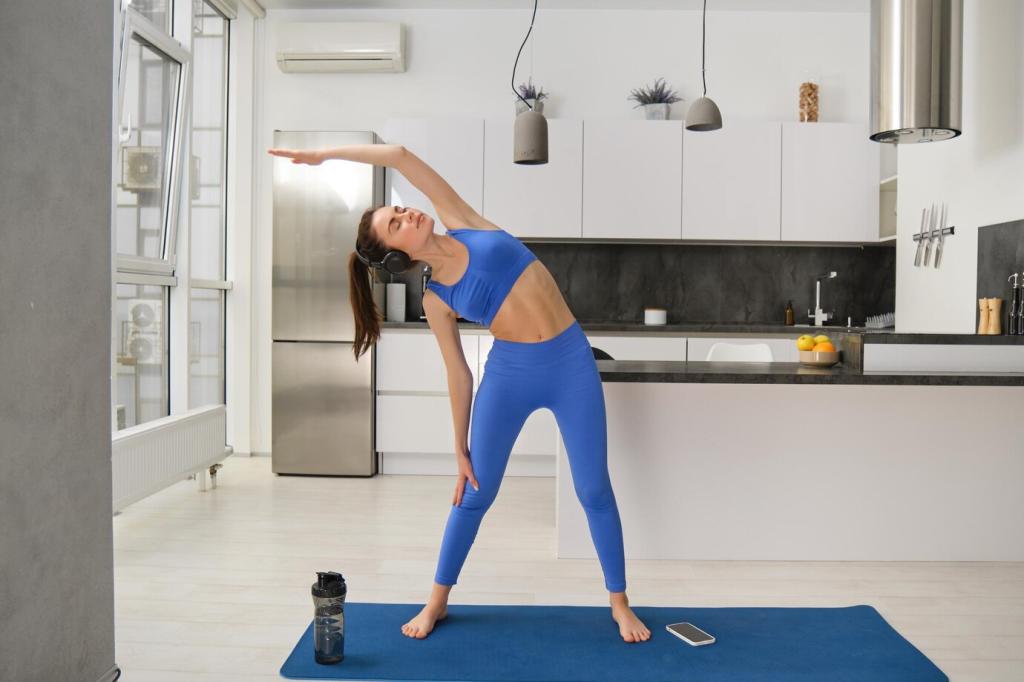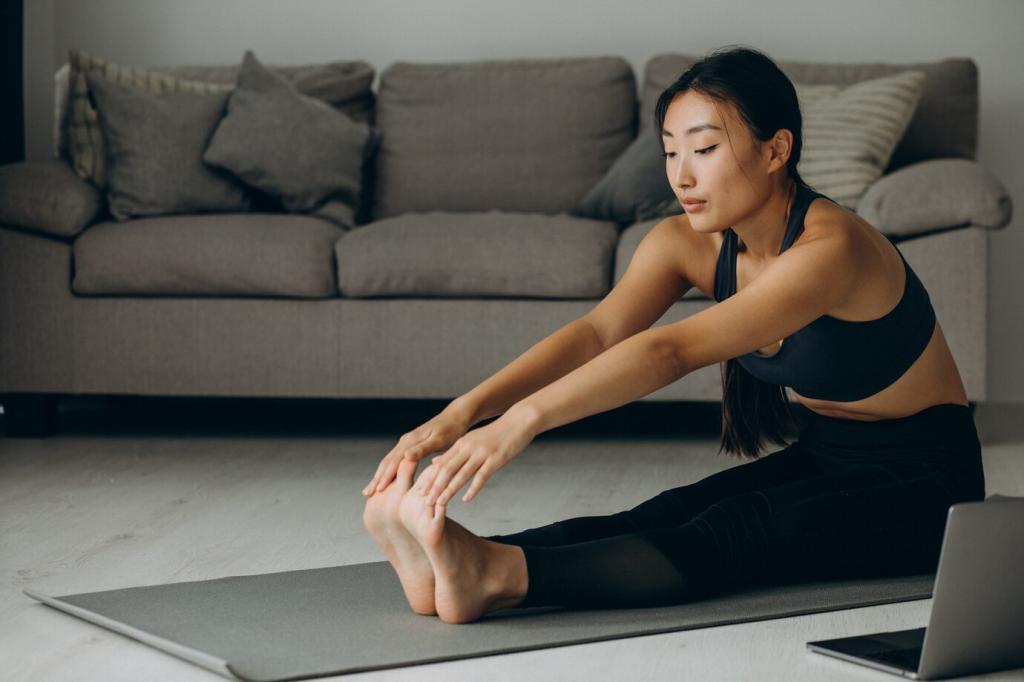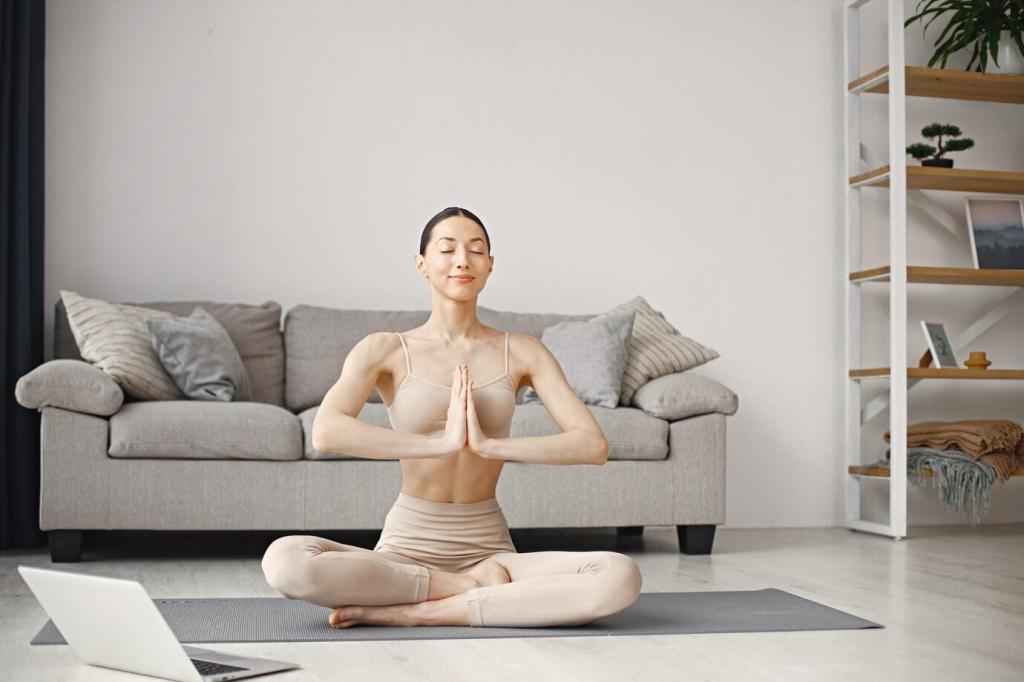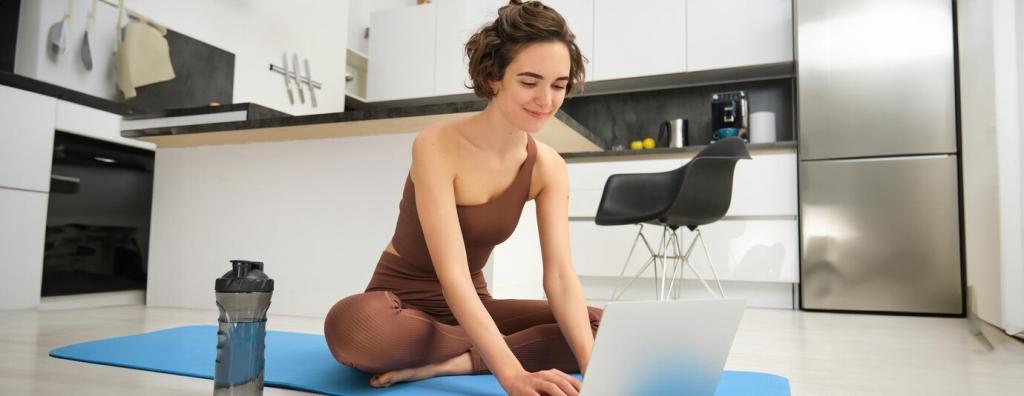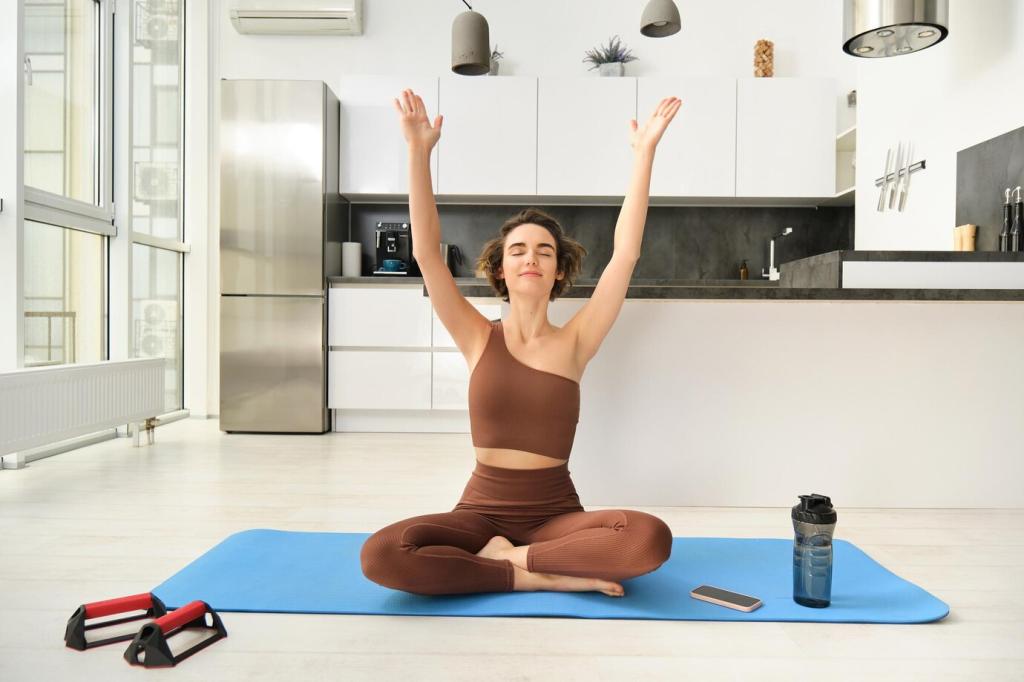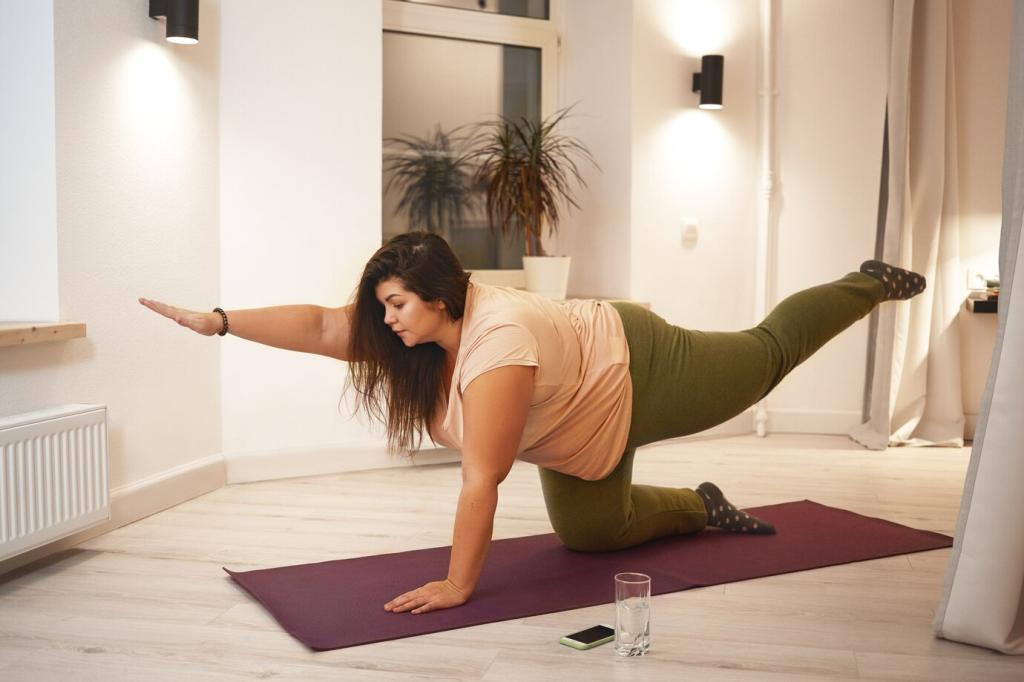How Breath Guides the Nervous System
Try breathing in for four counts and out for six or eight. A longer, unforced exhale can stimulate the vagus nerve, signaling safety to your body and mind. Notice shoulders settle, jaw loosen, and thoughts slow without pushing.
How Breath Guides the Nervous System
Box breathing uses equal counts—inhale, hold, exhale, hold—and can focus a scattered mind. Gentle wave breathing skips the holds, flowing smoothly. On stressful days, choose the softer wave; during mental clutter, the box can sharpen presence.

